Petrol can be the ute-owners preference for a host of reasons – environmental, noise, refinement, performance or even the memories. Byron Mathioudakis checks out three luxury, petrol-powered utes for Australian Plumbing Magazine.
The Contenders:
Ford Ranger Raptor
from $87,990: King of the hill
Jeep Gladiator Rubicon
from $87,250: Off-road warrior
Volkswagen Amarok TSI452 Aventura
from $79,990: Boulevard cruiser
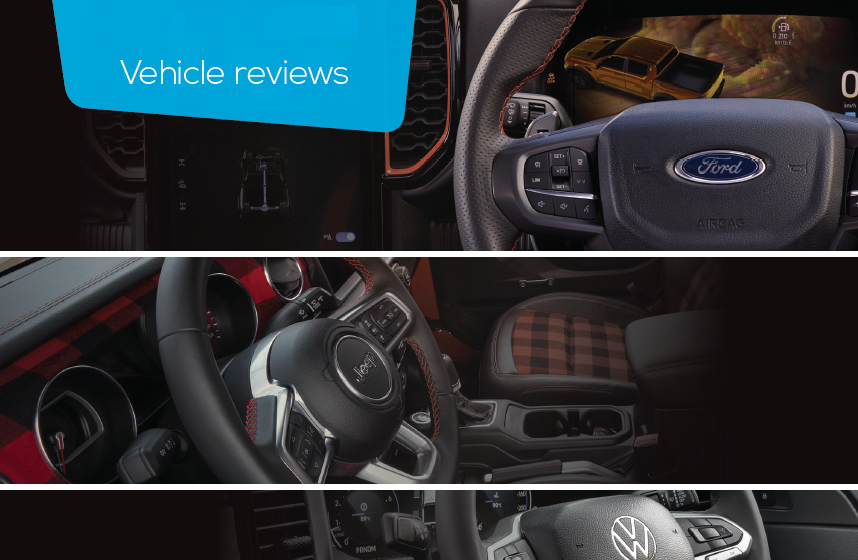
Going petrol is the preferred option for increasingly more people. And it is not surprising. After all, it was the only fuel choice for generations of Aussie ute owners, right up until the final VF Commodore in 2017.
Now, though, most medium-sized, dual-cab 4×4 utes are diesel, leaving limited petrol options. Here are three very different and intriguing choices currently on offer.
Ford Ranger Raptor from $87,990
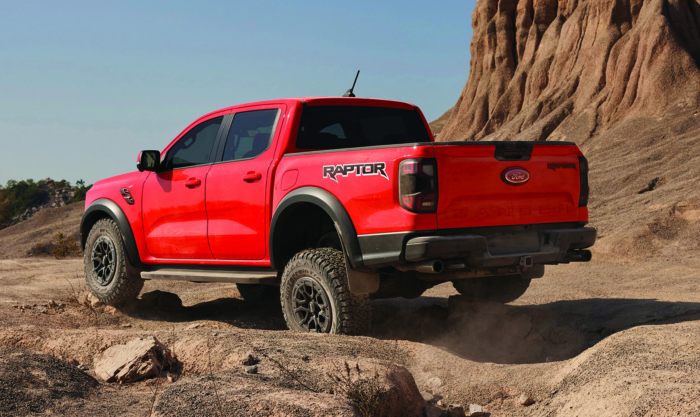 Ford has announced that a plug-in hybrid electric vehicle (PHEV) version is due from 2025, combining a 2.3-litre four-cylinder turbo-petrol engine with an electric motor and battery pack, for a pure-EV range of about 45km.
Ford has announced that a plug-in hybrid electric vehicle (PHEV) version is due from 2025, combining a 2.3-litre four-cylinder turbo-petrol engine with an electric motor and battery pack, for a pure-EV range of about 45km.
It’s easy to see why the Ranger Raptor resonates so strongly with Australians.
As the first - and for now the only - performance dual-cab, it harks back to the iconic locally-made V8 utes as defined by the Holden Commodore SS and Ford Falcon XR8s. Sourced from Thailand, it’s also the sole vehicle series designed and developed in Australia.
Little wonder, then, that wait times can spill into years.
Behind that formidable grille is a 292kW/583Nm 3.0-litre twin-turbo V6, driving all four wheels via a 10-speed automatic transmission.
Rousing and raucous, it packs a mighty wallop, accompanied by a serious exhaust rasp, for fiery and fast on-road motoring. Yet, being a Raptor, it also provides rally-style muscle away from the beaten track.
Using a version of the Ranger Wildtrak’s permanent 4WD system with an electronic on-demand two-speed transfer case and front and rear locking differentials, its seven drive modes includes ‘Baja’, which provides high-speed off-road performance.
Note, however, that driving this Ford like you’ve stolen it demands plenty of premium unleaded petrol.You’ve been warned.
To help cope with all that power, the Raptor swaps out the Ranger’s truck-like, leaf-spring rear suspension for long-travel coil springs, while ‘Fox 2.5’ shock absorbers with electronic dampers and special all-terrain 17-inch tyres are also fitted. Collectively, they benefit both ride comfort and handling, making the Ford agreeably light and easy to control.
The chassis and body have also been beefed up, providing added crash protection.
You can spot a Raptor via its unique bonnet, side vents, broader rear section with wider wheel arches and dual exhausts, while heavily bolstered seats, a larger 12.4-inch digital instrument cluster and paddle shifters continue the sporty yet luxurious themes inside.
A 12-inch central touchscreen dominates the dash, offering wireless connectivity for Apple CarPlay/Android Auto, while wireless charging, premium audio, heated front seats and leather trim are also present.
Finally, like all three utes featured here, the advanced driver-assist safety includes autonomous emergency braking (AEB), adaptive cruise control and lane warning/keep tech.
Yes, the Raptor is lairy, and thirsty when driven hard, but it is also the fastest yet most sophisticated and fun ute you can buy - on and off road. There’s nothing like it.
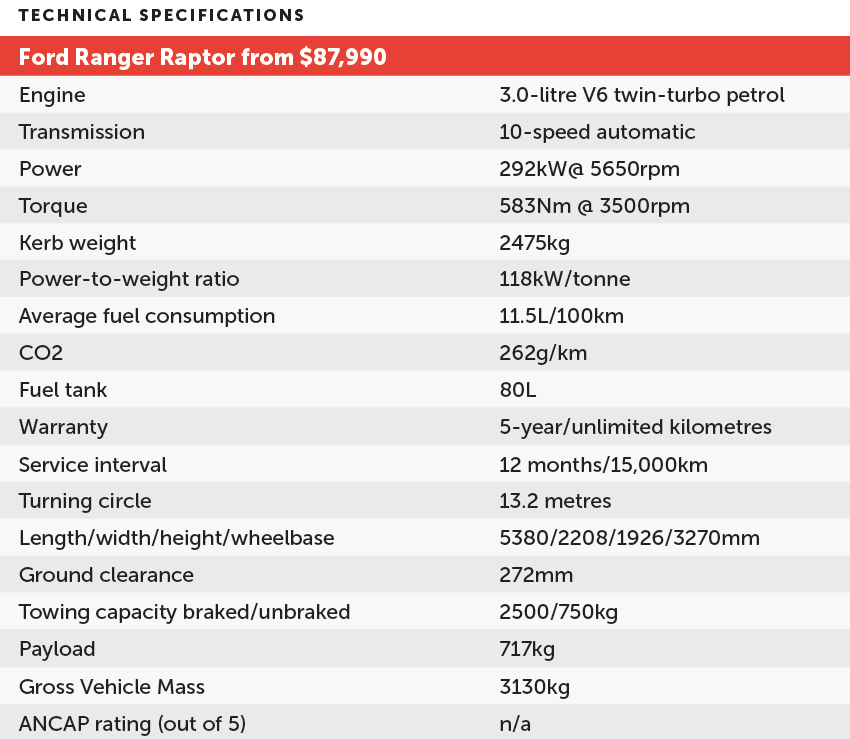
Jeep Gladiator Rubicon from $87,250
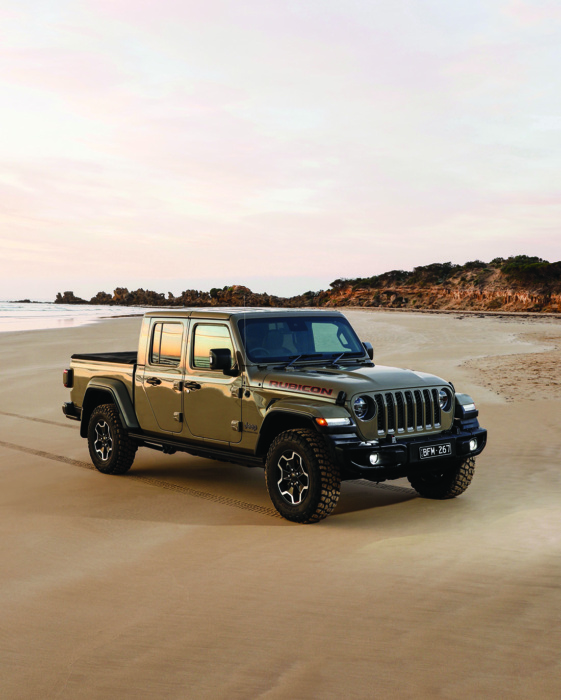
From mid-2024 a Gladiator facelift will usher in a restyled rille, a larger 12.3-inch central touchscreen, higher-quality cabin materials, extra equipment and fresh wheel designs.
It’s surprising the Jeep Gladiator isn’t more successful. For starters, being bigger than a Ranger but smaller than a Dodge Ram, the Wranglerbased ute offers a lot of metal for the money.
Uniquely, the Gladiator is also the world’s only convertible ute, since the roof and doors can be removed, though the latter isn’t road-legal in Australia. Plus, the windscreen can be flattened down, classic Jeep style, while the load area is designed to carry two trail bikes.
As in the Wrangler, you’ll find Chrysler’s 209kW/347Nm 3.6-litre V6, driving an on-demand 4×4 system via an eight-speed auto.
Smooth and quiet at idle, its performance is at-best brisk, needing a lot of throttle to really build up speed. But doing so brings excessive noise and high-fuel consumption, so it’s best to take it easy.
Nor is the Gladiator nimble. Its cushy suspension consists of coil springs and a live axle at both ends, with a five-link design out back. While this optimises off-road capability and durability, it makes for vague steering and cumbersome handling. And the Jeep only scores a three-star crash-test rating.
On the other hand, the Rubicon shines out in the bush. Compared to the base Night Eagle grade, it costs $9000 extra, but adds useful off-road modes, locking differentials, a 77.2:1 crawl ratio and ‘Performance’ suspension with two-inch heavy-duty shockers and electronic sway-bar disconnect for excellent wheel articulation. Wheels are 17-inch alloys wearing 32-inch all-terrain tyres.
This is the Gladiator to get.
Clamber up inside the Wranglerderived cabin, and you’ll find a genuine five-seater with lots of space. A chunky dash houses an 8.4-inch touchscreen with Apple CarPlay/Android Auto connectivity, while the Rubicon includes decent heated front seats and leather. And, fun fact: the interior can be hosed down thanks to removable carpets and drain holes.
Which sums up the Gladiator.
Big, roomy and practical, it’s really an off-road-first ute proposition, mixing outstanding 4×4 abilities with sufficiently adequate on-road manners.
This Jeep proudly marches to its own beat.
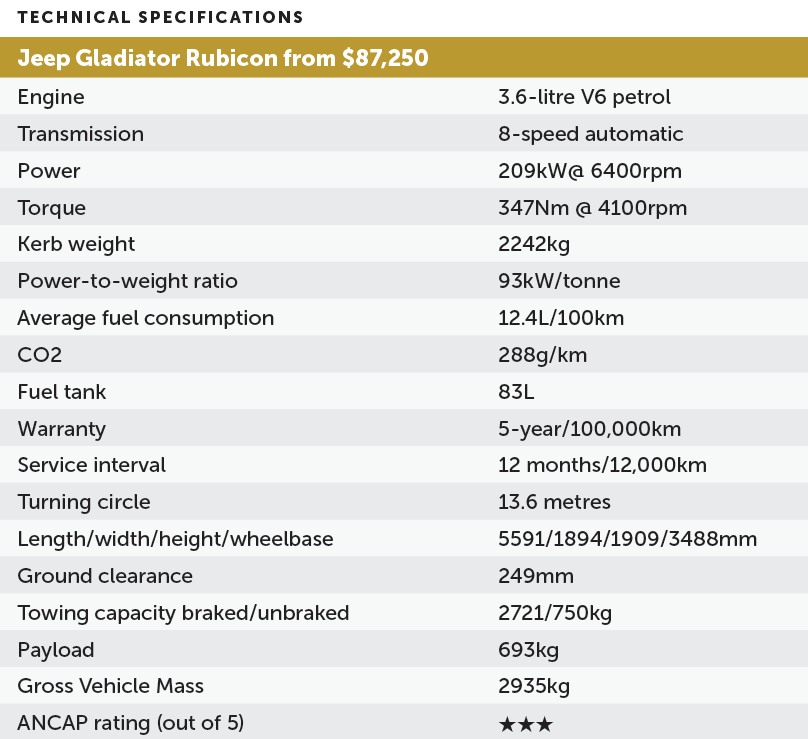
Volkswagen Amarok TSI452 Aventura from $79,990
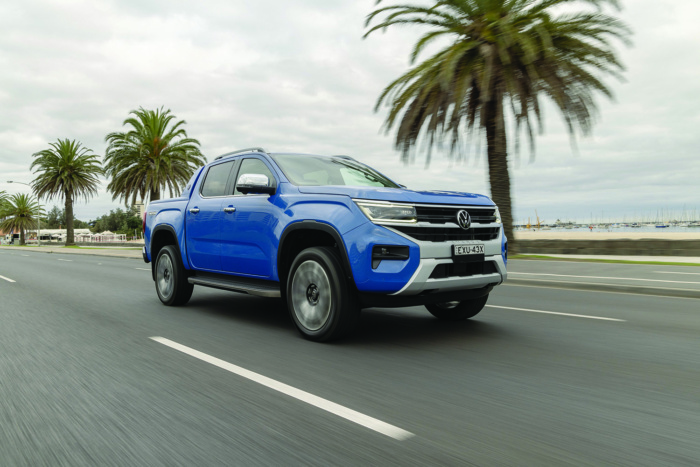
VW has confirmed that aftermarket tuners will add more power and extra chassis modifications from 2024, so maybe then the Amarok will rise to the Raptor challenge.
Good as it was, the original Amarok wasn’t a roaring sales success, forcing VW to rely on Ford for a replacement. Released this year, the result is a slightly different take on the latest Ranger, albeit using the latter’s body, engine options and architecture.Given this background, the fact that the result looks this pretty is remarkable.
Topping the range is the Aventura.
It’s available with Ranger’s 184kW/600Nm 3.0-litre turbo-diesel V6 or, exclusively, a 222kW/452Nm 2.3-litre four-cylinder turbo petrol engine (from the Mustang EcoBoost!) VW dubs TSI452. Like the Ford mother ute, the Amarok uses a 10-speed auto, driving through a permanent 4WD system with the six driving modes familiar to Ranger owners: Normal, Eco, Tow/Haul and Slippery for on-road driving, and Mud/Rut and Snow/Sand for off-road excursions.
Although it may be the closest the Amarok gets to challenging the Raptor on paper, in reality, the Aventura TSI452 falls short for excitement and refinement.
Yes, there’s plenty of punchy performance available, but that smaller turbo engine needs to rev hard to achieve that, and sounds gruff doing so. Plus, with less torque than in a Ranger diesel, the transmission is forever hunting between gears to settle on the right ratio. And fuel consumption (drinking expensive premium unleaded) can be disappointingly high. Worst of all, though, is the suspension. Using leaf springs out back, over bad roads, the ride is just too stiff and abrupt on the (admittedly attractive) 21-inch wheel/tyre package. At least the Amarok steers and handles sweetly on smooth roads. Things start looking up inside, thanks to a spacious cabin and stylish dashboard that benefits from a VW-esque makeover, though it still operates Ford’s excellent instrumentation, climate control and multimedia systems. And, like daddy Ranger, there is an impressive list of standard equipment, as well as decent safety tech.
Finally, the VW offers the highest towing capacity here by some margin.
Yes, the Aventura is stylish inside and out, and - on slick roads at least - comfortable and easy to hustle along. But the smaller-wheeled PanAmericana diesel is the preferable Amarok. And for just $10K more, the Raptor romps ahead.
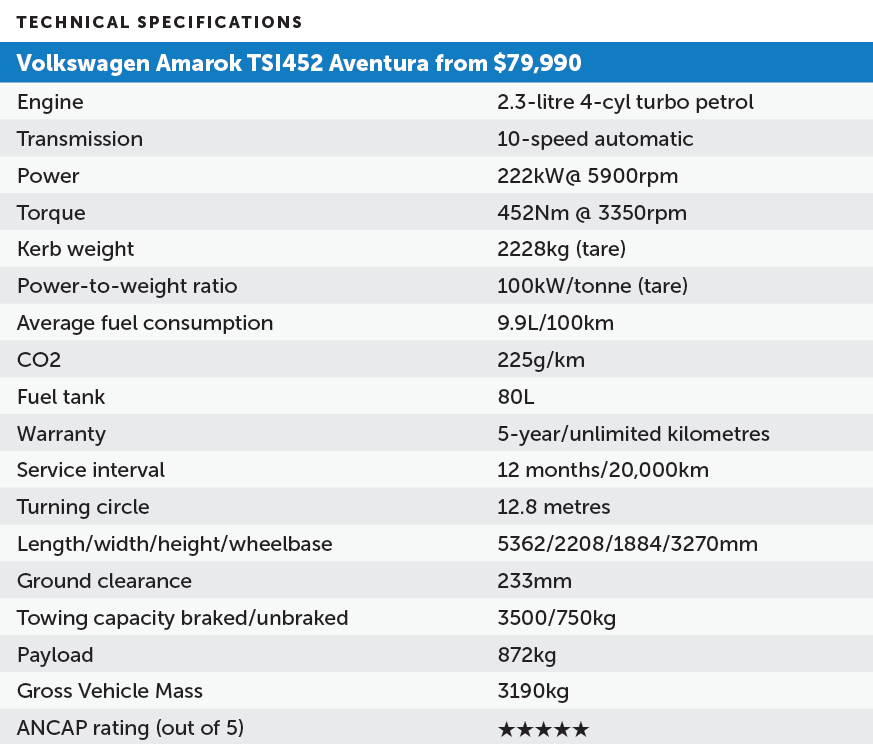
Share this Article






